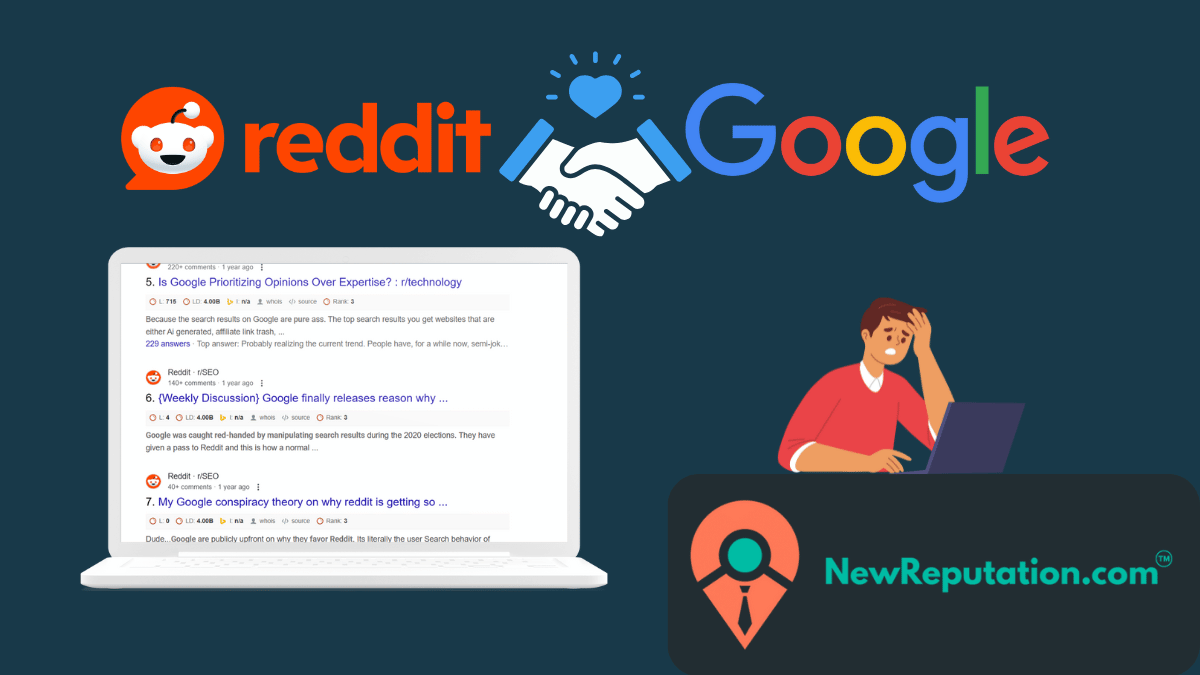Once hailed as a democratizing force for information and expression, the internet has become a fertile breeding Once hailed as a democratizing force for information and expression, the internet has become a fertile breeding ground for a chilling phenomenon: internet defamation.
False and harmful statements published online about individuals or entities can have devastating consequences, leaving victims with shattered reputations, emotional distress, and even financial losses.
This article delves into the complex world of internet defamation, exploring its legal nuances, practical challenges, and effective strategies for navigating this digital minefield.
Understanding the Elements of Defamation:
Before treading this treacherous path, it’s crucial to understand the legal pillars of defamation. To prove defamation, one must demonstrate:
- Falsity: The statement must be demonstrably false. Opinions and criticisms, however harsh, are generally protected.
- Publication: The statement must be communicated to a third party. Private communications, for example, might not qualify.
- Harm: The statement must cause actual or potential harm to the victim’s reputation, standing, or livelihood.
- Fault (depending on jurisdiction): Sometimes, the defamer must have acted intentionally or negligently.
The distinction between libel (written) and slander (spoken) remains relevant online. Written statements, for their permanence and broader reach, are more damaging and more accessible to prove.
Additionally, certain statements are considered “per se” defamatory, meaning they are presumed harmful without requiring proof of specific damages.
Examples include accusations of criminal activity or sexual misconduct.
Defamation vs. Slander vs. Libel
Defamation and slander are legal terms that refer to damaging someone’s reputation by making false and harmful statements about them. However, there is a crucial difference between the two:
- Defamation: Defamation is the umbrella term that encompasses both libel and slander. It is a false statement that injures someone’s reputation and lowers them in the estimation of others.
- Slander: Slander is a type of defamation that is spoken. It is an untrue statement about someone spoken aloud, shared through gestures, or communicated in any way that is not written or published.
- Libelous: A statement must be false to be libelous. Even harmful but true statements are not considered libel.
Here’s a table summarizing the key differences between defamation and slander:
| Defamation | Libel | Slander | |
| Definition | False statement that injures someone’s reputation | False statement that is written or published | False statement that is spoken aloud |
| Example | Someone says on social media that you are a thief. | A newspaper publishes an article that falsely claims you were arrested for drug trafficking. | Someone tells your boss that you are lazy and incompetent. |
| Difficulty to prove | Generally easier to prove than slander, as there is usually a written record of the statement. | Can be difficult to prove, as there may be no witnesses or other evidence. | “He said/she said” situation |
Strategies for Dealing with Online Defamation
Online defamation can be incredibly stressful and damaging, so it’s essential to understand your options and take appropriate action. Here are some strategies for dealing with online defamation:
Gathering Information and Evidence:
- Document the Defamation: Take screenshots of the defamatory content, including URLs, dates, and author usernames. Save copies of emails or messages containing defamatory statements.
- Assess the Content’s Validity: Is the statement demonstrably false? Does it have a basis in truth or opinion? Understanding the nature of the claim will guide your response.
- Evaluate the Impact: Consider how the defamation affects you personally and professionally. Is it causing emotional distress, reputational damage, or financial loss?
Responding to the Defamation:
- Ignore it: Sometimes, minor defamation can be the best strategy, especially if it’s likely to fade away quickly. Engaging with it could give it more attention.
- Respond Publicly: If the defamation is severe and damaging, you may need to respond publicly to address the falsehoods. Do so calmly and professionally, focusing on correcting the record.
- Contact the Platform: Report the defamatory content to the platform where it appears. Most platforms have procedures for handling complaints of online abuse and harassment.
Legal Measures:
- Send a Cease and Desist Letter: A lawyer can draft a formal letter demanding the removal of the defamatory content. This can be a powerful tool, especially if the platform is reluctant to take action.
- Consider Legal Action: In some cases, legal action may be necessary to obtain compensation for damages caused by the defamation. Consult a lawyer specializing in defamation law to explore your options.
Protecting Your Reputation:
- Monitor Your Online Presence: Regularly check your online search results and social media and review sites for mentions of your name. This allows you to identify and address potential defamation quickly.
- Build Positive Online Content: Create and share positive content about yourself and your work. This can help push harmful content down in search results.
- Develop a Crisis Communication Plan: A plan will help you respond effectively to future defamation situations and minimize damage to your reputation.
Truth, Opinion, and Defenses to Defamation
Understanding the difference between truth, opinion, and defamation is key if you’re dealing with harmful online content. Not everything negative is legally considered defamation. A strong defense to defamation is that the statement was true. Truth, even if it hurts someone’s reputation, is not defamatory. Courts look at whether the statement is a verifiable fact or just someone’s pure opinion. A comment like “I think this business is shady” might be protected under the fair comment privilege or neutral reportage privilege, depending on the context.
To win a libel or slander case, the other side must usually prove the statement was false and caused real harm. If you’re a public figure, you also have to show actual malice—that the person knew it was false or acted with reckless disregard. For private individuals, the standard is lower, but negligence still matters. Courts also consider how a reasonable reader would interpret the content. Was it clearly an opinion or presented as a fact?
Sometimes a retraction can reduce liability. Public statements from public proceedings often carry more protection. If you’re unsure what counts as defamation, talk to a lawyer before taking action. Knowing these defenses can help you respond with clarity and avoid overreaching.
Differences Between Public and Private Figures
Understanding the difference between public and private figures is crucial in defamation law. If you’re a private individual, the bar to prove defamation is lower. You typically only need to show that the person who made the statement was negligent. But if you’re a public figure, things get more complicated. You must prove actual malice—meaning the person either knew the statement was false or acted with reckless disregard for the truth.
This legal standard comes from common law and is often applied in cases involving libel or slander. It also applies to both defamation per se, where harm is assumed, and defamation that requires proof of damage. The reason the law treats public figures differently is because they have more access to the media and greater ability to respond publicly.
Sometimes, people become limited-purpose public figures by stepping into a public controversy. Even if they didn’t choose fame, their role in a debate can raise the legal bar. In other cases, someone might become an involuntary limited-purpose public figure, making it even harder to prove defamation.
Whether you’re a well-known influencer or a private citizen protecting your professional integrity, the rules aren’t the same. Understanding how republication of false information or statements made in the media can impact your case is essential. Defamation laws are designed to protect reputations—but they also recognize the public’s right to discuss issues openly.
Real-Life Examples of Internet Defamation
Unfortunately, The internet has made defamation easier than ever, and some high-profile cases have highlighted this complex issue.
Here are a few notable examples with varying outcomes and implications:
1. Coleen Rooney v Rebekah Vardy (2022): “Wagatha Christie”
This British case, dubbed “Wagatha Christie” for its tabloid nature, involved two footballers’ wives, Coleen Rooney and Rebekah Vardy, in a dispute over leaked private Instagram posts. Rooney accused Vardy of leaking the posts to a newspaper, leading to a highly publicized trial about truth, malice, and the reach of online gossip. Ultimately, Rooney won the case, highlighting the potential consequences of careless online sharing.
2. Johnny Depp v Amber Heard (2022): Defamation and Domestic Abuse
This American case saw Hollywood actor Johnny Depp sue ex-wife Amber Heard for defamation over an op-ed she wrote describing herself as a victim of domestic abuse. The trial, streamed live and intensely public, focused on the nature of their relationship and the credibility of both parties. The jury found in favor of Depp, awarding him damages, while Heard won on one of her counterclaims against Depp. This case, though controversial, brought meaningful conversations about online defamation and victim blaming to the forefront.
3. Hulk Hogan v Gawker Media (2016): Right to Privacy vs. Freedom of Speech
This American case revolved around a wrestler, Hulk Hogan, suing website Gawker Media for publishing a sex tape containing him. While Gawker argued for freedom of speech and newsworthiness, the court sided with Hogan, finding the publication violated his privacy rights. This case had significant implications for online media, forcing publications to consider privacy concerns more carefully.
4. Jack Monroe v Katie Hopkins (2015): Food Writer vs. Controversial Columnist
This British case pitted food writer Jack Monroe, known for budget-friendly recipes, against journalist Katie Hopkins’ columns criticizing Monroe’s lifestyle. Monroe successfully sued for defamation, highlighting the harm online negativity can cause, particularly toward individuals or groups facing vulnerabilities.
5. Rachel Riley v Mike Sivier (2022): Countdown Presenter vs. Blogger
In this UK case, mathematician and TV presenter Rachel Riley successfully sued blogger Mike Sivier for harassment and anti-Semitic abuse online. The court’s decision emphasized the need for platforms to hold users accountable for harmful content and protect individuals from online hate speech.
These are just a few examples, and the complexities of internet defamation vary greatly depending on jurisdiction, platform specifics, and the nature of the alleged defamation.
Statute of Limitations and Legal Procedures
Understanding how long you have to file a defamation claim is crucial. The statute of limitations sets strict deadlines. In most states, you must act within one to two years from the date the defamatory content was published. If you wait too long, your claim could be dismissed—even if it’s valid. This is especially important with anonymous posters or when filing a John Doe lawsuit. Courts may allow extra time under the discovery rule if the identity of the person behind the statement was unknown at first. But even then, the window to act is short.
Jurisdictional concerns can also affect your case. If the person who posted the defamatory content lives in a different state, that could impact where the lawsuit can be filed. The discovery process is key in online cases, especially when using subpoenas to unmask anonymous posters through ISPs. But be prepared—some states have anti-SLAPP statutes, which protect free speech and could cause your case to be dismissed early if it’s seen as an attempt to silence criticism.
There are also constitutional and statutory privileges that might shield certain speech, especially when it comes from media or public proceedings. Understanding whether the content qualifies as continuous publication or is a one-time post matters too. Every step requires attention to detail. If you think you’ve been defamed online, speak to a defamation attorney quickly. Time really does matter when your reputation is on the line.
Identifying and Suing Anonymous Defendants
Identifying and suing anonymous defendants online is possible, but it takes time, evidence, and legal precision. If someone is posting false or damaging content about you using an anonymous account, you can still take legal action. The first step often involves a John Doe lawsuit, which allows you to begin the case without knowing the real identity of the person. From there, your legal counsel can request information from websites, platforms, or ISPs under specific procedural mechanisms that support the unmasking of anonymous online actors. To succeed, you need strong evidence collection to prove the statement was false, harmful, and made with intent. This includes screenshots, timestamps, and context around the defamatory website or cyber libel case.
Sending a cease-and-desist letter is often the first move. It shows you’re serious and creates a paper trail, even if the anonymous account doesn’t respond. Courts can then subpoena platforms based on their platform policies to disclose account or IP information. You’ll need to show the court why the identification of anonymous parties is essential for justice. Even if the person used pseudonyms, the law offers ways to find them. Having a qualified attorney with experience in this area is key.
Reputation Management and Content Removal
Managing your online reputation starts with knowing what’s out there. Set up a Google Alert to track mentions of your name or business. If you find a false or damaging post, act quickly. Removal of defamatory content often requires a mix of legal and strategic tools. Content removal strategies vary depending on the platform, the nature of the post, and whether it qualifies as a false statement of fact. In some cases, public relations professionals can help address harmful content through positive press or media outreach. In others, cyber-investigators and content removal attorneys may be needed to trace anonymous sources or enforce takedown procedures.
Consumer feedback platforms and social media websites have their own take down procedures, but they often require clear evidence of defamation. Understanding these rules can speed up the removal process. If legal action is necessary, content removal tactics may include cease-and-desist letters, formal complaints, or even litigation under established legal theories. When your reputation is at risk, combining legal tools with public relations support gives you the best chance of success. Be persistent and document everything. With the right approach, harmful content can be addressed—and in many cases, removed entirely.
Role of Internet Platforms and Third Parties
Internet platforms and service providers play a major role in how online content spreads. When someone posts defamatory content, people often wonder if the platform—like Google or a social media site—is responsible. In most cases, the answer is no. Under Section 230 of the Communications Decency Act, platforms are not held liable for content posted by users. That protection is what allows sites like crowd-sourcing review sites and chat rooms to operate without constantly policing every comment.
That said, platforms still have rules. If you find a harmful or false post, you can report content on Google or other social media platforms. Each one has its own terms, and if a comment violates those terms, it may be removed. Some companies use bots and scripts to scan for harmful content automatically, while others rely on human moderators. In more serious cases, lawyers can subpoena records or use cyber-investigators to trace posts and uncover who is behind them.
For businesses and individuals affected by defamation, knowing these rules matters. If the defamatory content is causing reputational harm, it’s important to act quickly. Legal action may be needed, especially when internet service providers or third parties have data that can help. Platforms can’t always remove what’s harmful, but with the right legal approach, content can be challenged, and you may be able to restore your reputation.
Special Considerations for Businesses and Professionals
For businesses and professionals, online reputation is more than just an image issue—it can directly impact revenue, partnerships, and long-term trust. Negative online reviews, misleading comments, and false claims can damage search results and cause reputational harm. Trade libel and defamatory statements, especially from former employees or competitors, can trigger financial losses and hurt professional credibility. A business litigation attorney can help navigate defamation claims, but proactive steps—like monitoring online reviews, responding strategically, and securing libel insurance—can make a difference.
Conclusion
The internet can be a breeding ground for defamation. Still, following these tips and staying vigilant can minimize your risk of becoming a victim.
Remember, if you encounter online negativity, don’t hesitate to reach out for help from professionals like NewReputation at 855-750-0583. They have the experience and resources to help you protect your reputation and get your life back on track.
Don’t let online negativity control your life. Take action and protect your reputation today.




